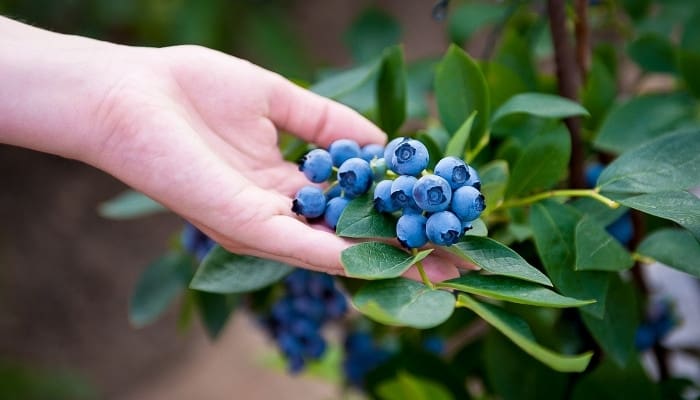Blueberries are an amazing crop that can thrive in the majority of locations throughout the country.
The plant has a variety of cultivars that can survive in different temperatures and growing conditions.
There are even dwarf cultivars that are meant to live in containers.
Can you grow blueberries indoors? You can grow blueberries indoors as long as you are able to meet the needs of the plant. The two most important factors are the getting enough chill hours for your chosen cultivar and providing lots of direct sunlight every day. Acidic soil and consistent watering will keep the plant thriving.
Just think of the excitement of grabbing a few berries off the bush by the window to top off your yogurt in the morning.
Many fruiting plants cannot survive indoors, but a blueberry plant can give you a hearty harvest each year.
How To Grow Blueberries Indoors
Like most fruit trees and berry plants, blueberry plants need full sun in order to be healthy and produce fruit.
This is the hardest condition to meet for an indoor blueberry plant. However, these plants also have specific temperature and soil requirements.
Ideal Soil for Indoor Blueberry Bush
Blueberries require acidic soil, ideally a pH of 4.5-6.5, in order to thrive and produce a good harvest.
You can amend your soil to lower the pH by adding peat moss, sulfur, diluted vinegar, or coffee grounds.
There are also acidic soil and blueberry-specific soil mixes that you can purchase.
It is important that the soil drains well because while blueberries do need a lot of water, excess water sitting around the roots can lead to root rot and other issues for the plant.
Light Requirements for Blueberry Plants
When planted outdoors, blueberry plants require full sun (6-8 hours). This can be hard to achieve indoors.
The best location is usually a south-facing window that receives as much direct sunlight as possible.
A blueberry plant may survive indoors without receiving enough sunlight, but it will most likely not produce fruit.
If your home does not have a sunny location, consider using a grow light for your blueberry plant.
I recommend getting a height-adjustable, full-spectrum lamp like this so you can raise it as the plant grows taller.
Watering an Indoor Blueberry Bush
Compared to traditional houseplants, blueberry bushes need a lot of water. The soil should never be allowed to dry out.
Check the soil frequently and water whenever the soil feels close to dry (but still slightly damp). Water thoroughly, and allow the excess to drain from the container.
Blueberry Bush Fertilizer
Blueberries do not need much fertilizer. Choose a slow-release fertilizer specifically for berries or fruit-bearing plants, and apply it two times per year (early spring and summer).
Pollination of Indoor Blueberry Bushes
Some varieties of blueberry plants are self-pollinating, but having another plant of a different variety can be beneficial.
Cross-pollinating usually creates a higher berry yield. It is important to have two varieties that bloom at the same time.
To achieve pollination, use a cotton swab or small paint brush to collect pollen from the blooms of one plant and transfer it to the other.
This will need to be done multiple times, and sometimes daily, while the plants are in bloom.
Pruning Blueberries in Pots
After you harvest all the berries, prune off weaker and older branches to promote new growth in the spring. New growth produces more fruit than older growth.
Best Blueberry Varieties To Grow Indoors
There are a few different factors to consider when choosing your indoor blueberry bush: chill hours, overall size, and self-pollination.
Top Hat
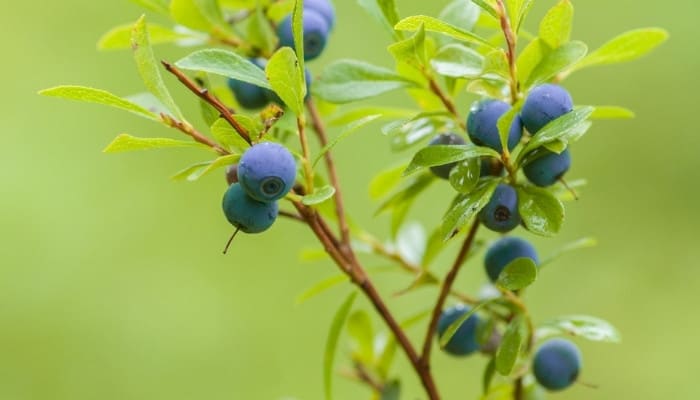
Top Hat is a common variety of blueberries that does well in colder climates.
- Plant Size: 24 inches tall
- Berry Size: Small
- Self-Pollinating: Yes
- Required Chilling Hours: 1,000-1,200 hours
Northsky
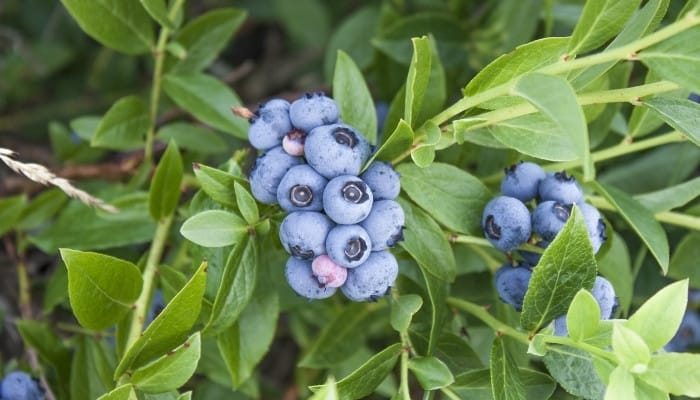
This low bush variety is perfect for containers because it stays small even at full size. This is also one of the cold hardiest varieties.
- Plant Size: 18 inches tall
- Berry Size: Small
- Self-Pollinating: Yes
- Required Chilling Hours: 800-1,000 hours
Northblue
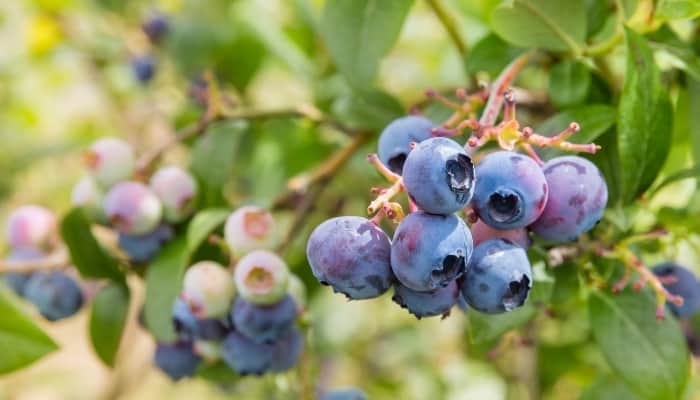
Northblue is a moderately sized low-bush variety. It is known for producing a large harvest.
- Plant Size: 48 inches tall
- Berry Size: Medium
- Self-Pollinating: Yes
- Required Chilling Hours: 800-1,000 hours
Sunshine Blue
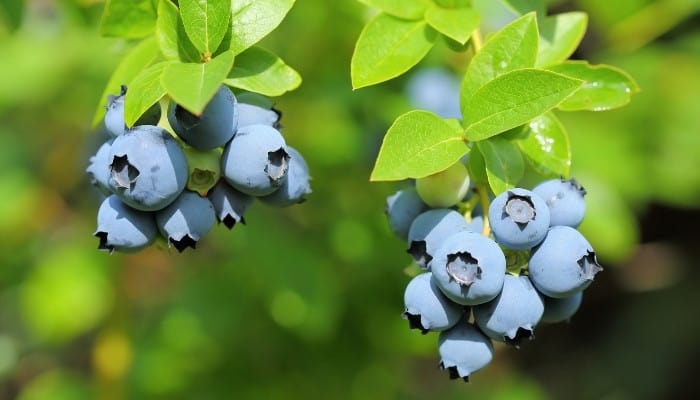
Sunshine Blue is a great variety for warmer climates or indoor use because it does not require many chill hours.
- Plant Size: 36 inches tall
- Berry Size: Medium
- Self-Pollinating: Yes
- Required Chilling Hours: 150 hours
Tips for Growing Blueberries Indoors
1. Know Your Cultivar
There are hundreds of different varieties of blueberry plants.
Each one has specific requirements for chill hours and temperatures, so it is important to know what your specific plant requires.
2. Understand Chill Hours
Chill hours refer to the amount of time the plant spends between 32-45 degrees Fahrenheit.
A certain amount of these low temperatures is required in order for the blueberry plant to begin blooming and producing fruit in the spring.
If you have a variety of blueberry bush that requires lots of chill hours, consider housing it outside during cool days or evenings.
3. Check Your Soil
Before planting your blueberry bush, make sure you have the appropriate soil pH. You can purchase a test kit here or at your local nursery or garden center.
Your plant will not produce fruit if the soil pH is too high.
Related Questions:
How Many Blueberries Can One Plant Produce?
The larger varieties of blueberry plants can produce up to 20 pounds per year (when grown in ideal conditions outdoors).
Most indoor blueberry plants are dwarf varieties and are not receiving as much sunlight, so expect a small yield.
Do Blueberries Produce Fruit Every Year?
Blueberry plants will not produce fruit for the first 2-3 years. After that, they will produce berries every year that the appropriate conditions are met.
Wrapping It Up
It takes a little extra effort to grow a blueberry plant indoors and have it produce fruit for you.
However, if you’re up for the challenge, you will get to enjoy the delicious rewards come harvest time.

